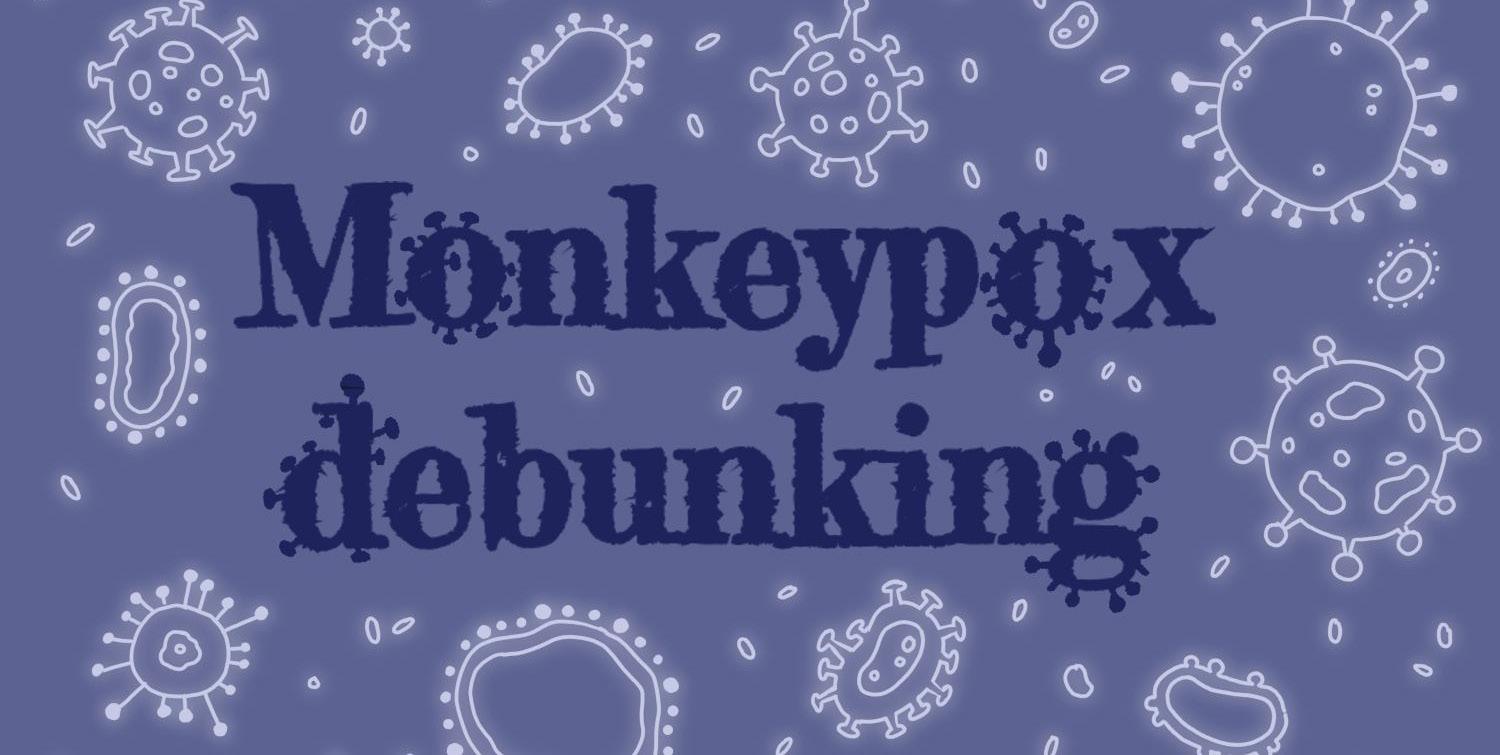
8 minute read
NEWS: Clearing confusion surrounding the monkeypox virus
CITY
Fort Collins takes minimum wage survey, considers raise
By Emmalee Krieg
@csucollegian
Minimum wage is always a hot topic, especially when it pertains to students. Recently, the City of Fort Collins sent out a survey to discuss the possibility of raising the minimum wage.
According to the City of Fort Collins Minimum Wage website, the minimum wage in Fort Collins is currently $12.56, which is the statewide level. Colorado’s minimum wage is based on the Consumer Price Index, which is currently very high.
“The stressor is the cost of housing,” said Ginny Sawyer, project and policy manager for the City of Fort Collins. “Data shows that wages have actually kind of kept up with a lot of goods and standard costs — they have not been able to keep up with housing.”
The survey results, posted on the city’s Minimum Wage website, show 1,159 respondents were employees. Almost half of those were between the ages of 20-29. While some lived with children or other family members, a large portion of employee survey respondents were college students.
“Students made up about — almost — 40% of the total respondents, but they made up almost 60% of the lowest earners,” Sawyer said.
That’s a huge deal, especially factoring in the price of school.
“Minimum wage has been rough for a while,” said Melissa Volentine, a customer sales associate at the CSU Bookstore.
Volentine is relatively new to Fort Collins from Colorado Springs, Colorado, where she went to the University of Colorado Colorado Springs for two years. Having moved to Fort Collins this August, she spoke about the difference in wages at UCCS.
“Right before I left UCCS, the campus had just raised their minimum wage to $14 an hour, and it pleased a lot of students,” Volentine said.
This means an implication of raising minimum wage is a chance to help students.
“Anything to help people kind of make ends meet,” Volentine said.
The survey is a good point of reference for the City Council.
“The goal is to raise the lowest wage workers but do it in a way that is sustainable for businesses,” Sawyer said.
According to the Minimum Wage website, the City Council “will discuss the minimum wage analysis in November.”
“We summarized the information to present to the council so they can consider it when they make decisions,” Sawyer said.
The council’s main goal is to consider raising the minimum wage, but part of the issue is that businesses need some predictability.
“Employers are still feeling quite a bit of stress and crunch from (the) pandemic as well as labor shortage and supply chain stresses,” Sawyer said.
Employers are still coming out of the COVID-19 pandemic, so while raising the labor pool minimum wage is nice, uncertain times make it difficult.
House Bill 19-1210 is partially responsible for these steps toward raising minimum wage. The bill was passed by the Colorado General Assembly in 2019, “allowing communities to set their own minimum wage standards,” according to Fort Collins’ website.
While the survey is not totally statistically valid because people self-select, it is a stepping stone.
“Our survey was just one piece of doing some outreach and engaging the community around the potential of rising minimum wage,” Sawyer said. Reach Emmalee Krieg at news@ collegian.com.
GINNY SAWYER
CITY OF FORT COLLINS PROJECT AND POLICY MANAGER
GRAPHIC ILLUSTRATION BY CHLOE LELINE
THE COLLEGIAN

SCIENCE

GRAPHIC ILLUSTRATION BY TRIN BONNER THE COLLEGIAN
By Miles Buchan
@buchanmiles
As the number of monkeypox infections has risen, so too have the confusion and controversy surrounding the disease.
Limited information about the monkeypox virus exists at this time, so guidelines and best practices are underdeveloped and continue to change.
As health professionals do what they can to learn about monkeypox, new information and shifting regulations hint that our understanding of this disease and the populations it may impact must remain open to new information.
According to an article from The New England Journal of Medicine, monkeypox was first identified in humans in the 1970s and has remained endemic in some regions of Africa since. The article says few outbreaks of monkeypox have been known to occur outside of these regions until April 2022, when cases began to be diagnosed in countries around the world.
According to the Centers for Disease Control and Prevention website, as of Sept. 14, known cases in the U.S. are more than 23,000. The Colorado Department of Public Health & Environment website states Colorado has had 291 human cases as of Sept. 21.
The New England Journal of Medicine article also includes information regarding how questions about monkeypox mainly revolve around how it spreads and who it may impact, two areas that are being continuously studied in universities and labs across the globe. Though not every answer is definite, some facts have been established.
When it comes to the spread of monkeypox, several modes of transmission have been identified. According to the World Health Organization, “it can be transmitted through contact with bodily fluids, lesions on the skin or on internal mucosal surfaces, such as in the mouth or throat, respiratory droplets and contaminated objects.”
According to WHO, there are numerous flu-like symptoms associated with monkeypox that commonly appear first, but the most recognizable symptom is a rash, which may appear several days after contraction of monkeypox and last around two to four weeks.
This rash consists of lesions that may appear on the skin — on the genital and anal regions, face, feet, palms, inside the mouth, etc. — and has been mistaken for established sexually transmitted diseases like syphilis.
One question being posed across medical and media outlets is whether monkeypox is classified as an STD, and the answer is yet to be determined. Although transmissions suspected to be correlated to the act of sex are exceedingly high at this time, some argue labeling monkeypox as an STD would only hinder progress and fuel stigmatization.
Jason Farley, an epidemiologist at the Johns Hopkins University School of Nursing, was paraphrased in an NBC article saying “when a disease is defined as a sexually transmitted infection that mainly affects men who have sex with men, many people may begin to think of it as ‘a gay disease’ that poses no risk to them.” Farley mentioned the AIDS epidemic of the 1980s, saying this kind of rationale led to the spread of HIV to other demographics at that time.
“This is not a sexually transmitted disease, which I think is being lost in some of the conversation as well,” said Maggie Hendrickson of the Colorado State University Pride Resource Center. “It’s spread by close contact, and some of the close contact people have is through sex.”
Other questions being investigated ask who is at risk of catching or spreading monkeypox and who may be more likely to develop serious health complications as a result of monkeypox.
From the few available studies that address the current monkeypox outbreak, the one from The New England Journal of Medicine examines the demographics of infected people as well as the circumstances surrounding their contraction of monkeypox.
In this study of 528 confirmed cases of monkeypox from 16 countries, 98% of individuals were gay or bisexual men, and 95% of the people studied developed a rash. Rashes that first appeared in the genital or anal regions or inside the mouth indicated to doctors that the individual contracted monkeypox through sexual activity, which was the suspected transmission route in 95% of the individuals.
It is important to remember that just because this disease is being found primarily among members of the LGBTQ+ community at this time does not mean it affects this population exclusively.
Regarding monkeypox and its association with the LGBTQ+ community, Hendrickson said, “It wasn’t that folks were at higher risk because of their identity, it was just disproportionately impacting folks in our community.”
One FAQ response on the WHO website states cases are “not limited to people who are sexually active or men who have sex with men,” and “people who have multiple or new sexual partners are currently most at risk.”
Previously, high-risk individuals were largely identified based on criteria that took into account whether or not a person was gay, bisexual or sexually active with other men specifically. Now, WHO identifies “people who live with or have close contact (including sexual contact) with someone who has monkeypox” as the group with the highest likelihood of contracting the virus.
Colorado vaccine specifications recently changed to exclude any specification of sexual orientation and now identify more people as eligible for vaccines. The Department of Public Health & Environment now recognizes people of any sexual orientation or gender identity who have had close contact with a person infected with monkeypox or multiple known or unknown sex partners as eligible individuals who may qualify for a vaccine.
“I’m happy that they’re removing the stigmatizing language about it because anyone can get monkeypox: any gender, any sexual orientation,” Hendrickson said.
According to WHO, monkeypox is a self-limited disease, which means in most cases, symptoms will subside on their own over time.
People who are at higher risk of developing serious health complications as a result of contracting monkeypox have been identified by WHO and CDC as infants, children, pregnant individuals and immunocompromised individuals.
For those who are at higher risk of serious health complications, treatments are available but in limited supply, so contact your health provider or view details about vaccine availability on Larimer County’s website.
Reach Miles Buchan at news@ collegian.com.





